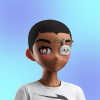Invite Scene - #1 to Buy, Sell, Trade or Find Free Torrent Invites
#1 TorrentInvites Community. Buy, Sell, Trade or Find Free Torrent Invites for Every Private Torrent Trackers. HDB, BTN, AOM, DB9, PTP, RED, MTV, EXIGO, FL, IPT, TVBZ, AB, BIB, TIK, EMP, FSC, GGN, KG, MTTP, TL, TTG, 32P, AHD, CHD, CG, OPS, TT, WIHD, BHD, U2 etc.
LOOKING FOR HIGH QUALITY SEEDBOX? EVOSEEDBOX.COM PROVIDES YOU BLAZING FAST & HIGH END SEEDBOXES | STARTING AT $5.00/MONTH!
3D bioprinting technique could create artificial blood vessels, organ tissue
-
Check out what our members are saying
 I highly recommend doing business with this user. He was very quick to answer and deliver when other users couldn't. 10/10 would do business again.
I highly recommend doing business with this user. He was very quick to answer and deliver when other users couldn't. 10/10 would do business again. great service ! superb speed !! top !!!Very informative and pleasant demeanour. Response time was impressive. Certainly lives up to his legacy as well hassle-free transaction all around.
great service ! superb speed !! top !!!Very informative and pleasant demeanour. Response time was impressive. Certainly lives up to his legacy as well hassle-free transaction all around. Invite worked like a charm! Easy to use services and great co-operative staff. They had fast response times and helped guide me to the correct product and gave me a great deal on…
Invite worked like a charm! Easy to use services and great co-operative staff. They had fast response times and helped guide me to the correct product and gave me a great deal on… very communicative, fast responses!Thank you very much for great, fast and efficient help!Awesome service. Thanks.
very communicative, fast responses!Thank you very much for great, fast and efficient help!Awesome service. Thanks. Ordered 2 torrent invites and the support shown and the speed at which it was done was fantastic. Really happy I found this place. When I need more torrents I know where to come.…
Ordered 2 torrent invites and the support shown and the speed at which it was done was fantastic. Really happy I found this place. When I need more torrents I know where to come.… First of all, thank you so much for retaining me. Inviter helped with my questioning and directed me to the best torrentinvites to fetch on. The approaches were super smooth, and…
First of all, thank you so much for retaining me. Inviter helped with my questioning and directed me to the best torrentinvites to fetch on. The approaches were super smooth, and… Inviter is awesome. Very fast and friendly. Excellent in answering questions and quick transactions. Will do business with again.Don't know how he does it, but @Inviter delivers! Had a smooth transaction, no hiccups!
Inviter is awesome. Very fast and friendly. Excellent in answering questions and quick transactions. Will do business with again.Don't know how he does it, but @Inviter delivers! Had a smooth transaction, no hiccups! Prefect and always a great communicator from start to finish will use again A+ for service and support
Prefect and always a great communicator from start to finish will use again A+ for service and support This seller is very professional, polite, and prompt. I was originally suspicious about this Site but I was very pleasantly surprised. I would like to recommend this to anyone wh…Il migliore venditore, 100%Well, he was really fast and loved that he didn't ask much and simply sent me an invite. 😊 It was painless and prompt. Thanks a lot, man.Last night I had the opportunity to write to the seller about wanting to buy the product. Today I received a reply with detailed instructions on how to pay. I received the prod…
This seller is very professional, polite, and prompt. I was originally suspicious about this Site but I was very pleasantly surprised. I would like to recommend this to anyone wh…Il migliore venditore, 100%Well, he was really fast and loved that he didn't ask much and simply sent me an invite. 😊 It was painless and prompt. Thanks a lot, man.Last night I had the opportunity to write to the seller about wanting to buy the product. Today I received a reply with detailed instructions on how to pay. I received the prod… Did not take long to get my desired account. Good job to @Inviter , for allowing a quick and painless way of getting my account. Thanks again.fast and good service i rly recomend this oneEnormously knowledgeable individual regarding the ins and outs of everything about private torrents and trackers. Not to mention he responds incredibly fast to messages, and his …
Did not take long to get my desired account. Good job to @Inviter , for allowing a quick and painless way of getting my account. Thanks again.fast and good service i rly recomend this oneEnormously knowledgeable individual regarding the ins and outs of everything about private torrents and trackers. Not to mention he responds incredibly fast to messages, and his … Everything went well, serious , very fast and pleasant seller . i recommend him all days
Everything went well, serious , very fast and pleasant seller . i recommend him all days First exchange I made, reasonable price, convenient payment method, simple and instant reactivity, no problem at all.
First exchange I made, reasonable price, convenient payment method, simple and instant reactivity, no problem at all. I didn't have much expectation at first but then I got what I was looking for and super fast with an excellent service. Keep the good work. I'm glad this site existSeems to work fine for now - will have to wait and see what the future holds.
I didn't have much expectation at first but then I got what I was looking for and super fast with an excellent service. Keep the good work. I'm glad this site existSeems to work fine for now - will have to wait and see what the future holds. Hello. A++ transaction. This was top notch communication and walk through from Inviter from start to finish. I successfully registered and am loving access to a really good one.…+Vouch Very Smooth Communication Bought an invite, I will be buying many more invites for sure and hopefully we can build long term relation. Recommended for sure.10/10 services. Very fast will trade again
Hello. A++ transaction. This was top notch communication and walk through from Inviter from start to finish. I successfully registered and am loving access to a really good one.…+Vouch Very Smooth Communication Bought an invite, I will be buying many more invites for sure and hopefully we can build long term relation. Recommended for sure.10/10 services. Very fast will trade again Got 2 accounts for a good price. Everything worked after the first try. Thank you @Inviter. Good job. Best regards, Zheltyy
Got 2 accounts for a good price. Everything worked after the first try. Thank you @Inviter. Good job. Best regards, Zheltyy Promptly and effectively fixed a problem with one of the product (my error, not seller's). Will definitely be back and will recommend to others as a quality vendor. 5/5 Stars. A…
Promptly and effectively fixed a problem with one of the product (my error, not seller's). Will definitely be back and will recommend to others as a quality vendor. 5/5 Stars. A… -
Our picks
-

Buy Empornium Invite
Inviter posted a topic in Premium Sellers Section,
Offering Empornium.is / Empornium.sx / Empornium.me / Empornium / EMP Invite, PM me for the price.
Commodity URL: https://www.empornium.is/, https://www.empornium.sx/, https://www.empornium.me/
Commodity REVIEW: https://www.invitescene.com/topic/40396-empornium-emp-porn-2020-review/-
-
- 699 replies

Picked By
Inviter, -
-

Buy BroadcasTheNet Invite
Inviter posted a topic in Premium Sellers Section,
For limited time I'm offering BroadcasThe.Net (BTN) Invite, PM me for price.
URL: https://broadcasthe.net/-
-
- 372 replies

Picked By
Inviter, -
-
![[In Stock] Buy REDActed.CH (RED) Invite](//www.invitescene.com/applications/core/interface/js/spacer.png)
[In Stock] Buy REDActed.CH (RED) Invite
Inviter posted a topic in Premium Sellers Section,
For limited time I'm offering REDActed.CH (RED) Invite, PM me for price.
URL: https://redacted.ch/-
-
- 114 replies

Picked By
Inviter, -
-






![[In Stock] Buy REDActed.CH (RED) Invite](https://www.invitescene.com/uploads/monthly_2019_12/Redacted.png.a96849d08b6f36b6140a4ead4a4cceba.png)
Recommended Posts
Join the conversation
You can post now and register later. If you have an account, sign in now to post with your account.